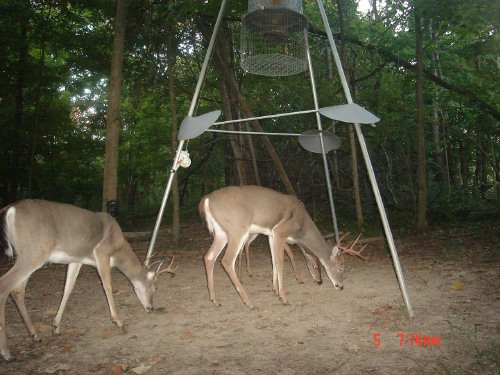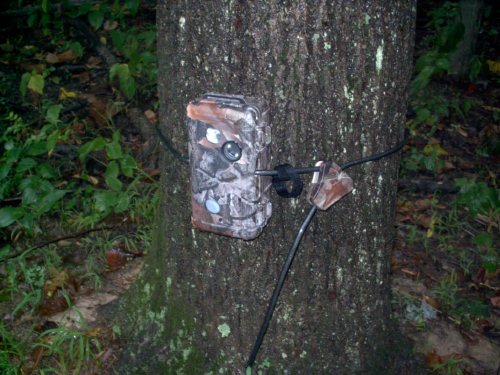|
Woodland SpyCamThe picture quality is very good. The SpyCam takes pictures that rival the EagleEye. Both cameras have 4.1 megapixel Sony cameras. To see more example pictures and an explanation of the picture quality grade visit the SpyCam Picture Quality Page. The SpyCam has two power up settings, a trail setting which is quicker and uses battery life up faster and a feeder setting which should be a little slower but easier on batteries. We tested the power up time against the other three scouting cameras that we are currently using. Using the trail setting the EagleEye was the quickest, then the SpyCam followed by the Penn's Woods and the Leaf River. When tested using the feeder setting the SpyCam was about the same as the Penn's Woods. It took the picture either right before or right after the Penn's Woods. When we had the SpyCam set on the trail setting it took 406 pictures over a three week period and the batteries were dead. The memory card was pretty much full, it had 244 mb on a 256 mb memory stick. When on the feeder setting the AA batteries will fill the memory card and still have a charge. The electronics in the Woodland SpyCam operate on one 9-volt battery and the Sony camera uses two AA batteries. I use rechargeable batteries for the AA batteries. Rechargeable AA batteries have proven themselves in our other cameras and have performed well as stated above. The set-up and use of the camera is relatively easy. The electronic controls for 24hr./day/night, time delay, single or double picture and feeder or trail power-up times are easily set using the dip switches on the board. The sensitivity and on/off switch are also on the circuit board. The setting instructions are inside the camera cover and easy to understand. The Sony camera needs to be set on certain settings to operate optimally as a scouting camera and they are set correctly when you receive the camera. To change the settings you need to get into the Sony manual. I have not needed to change the setting and they stay set even when changing batteries. I do little other than change the delay settings. The unit has an enclosed hole that runs through the case to run a Python locking cable through to attach it to a tree. I used to use bungee cables to attach the cameras to the tree but after using the included Python locking cable through the enclosed hole I now just use the Python cable on all of my digital scouting cameras that include one. This is my third Python locking cable and they are the best locking device for game cameras that I have seen so far. The manufacturer stated that some cameras had been stolen by cutting the eyes so they found a way to eliminate them. The Sony camera in the Woodland SpyCam has 32 MB of internal memory. This is good internal memory compared to other cameras but I have purchased a 256 MB flash card so we can get plenty of pictures. A USB cable comes with the camera to download pictures to your computer and there is an LCD screen on the back of the camera so that you can take a look at your pictures as soon as you get to your camera. I really like having a screen on my game cameras; I always take a quick look at the pictures as soon as I get to the camera. There are eight time delays varying from 10 seconds to 15 minutes. This is an ample amount of time delays no matter where you set up your camera whether it's at a feeder or along a trail. The Sony camera can easily be taken out of the unit and used as a personal digital camera and also has the capability of taking short video clips. The Woodland SpyCam is no longer available.


|
